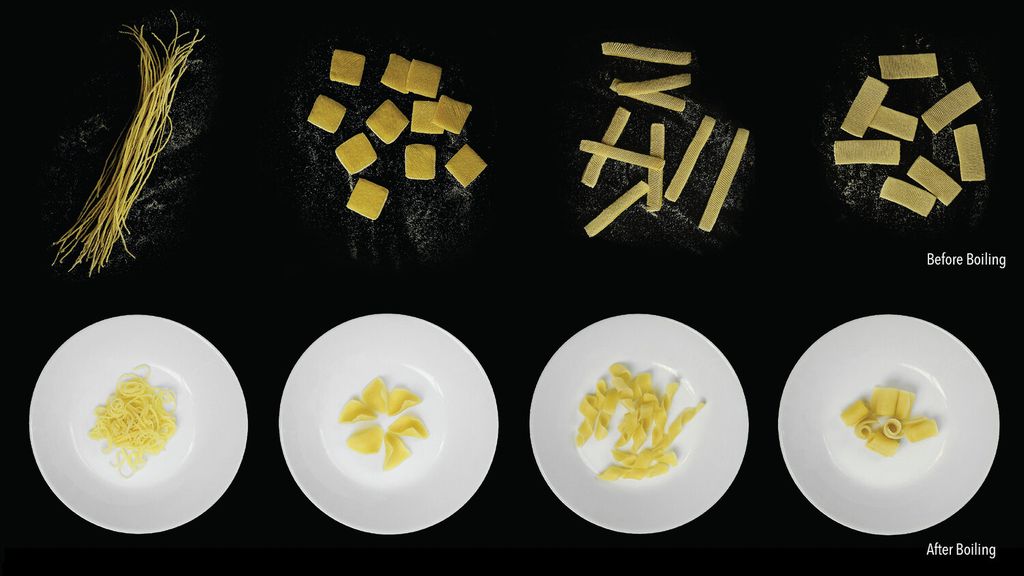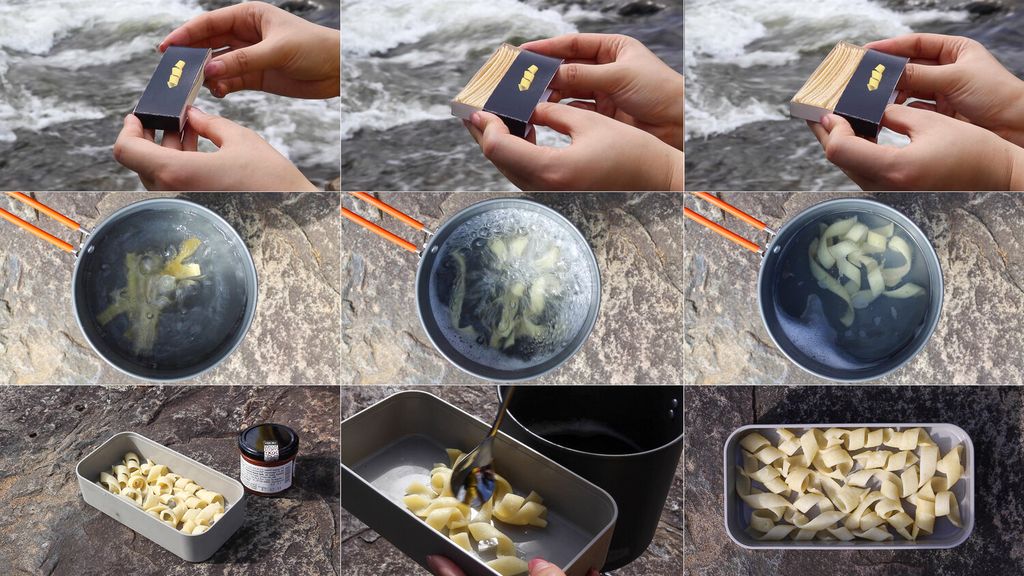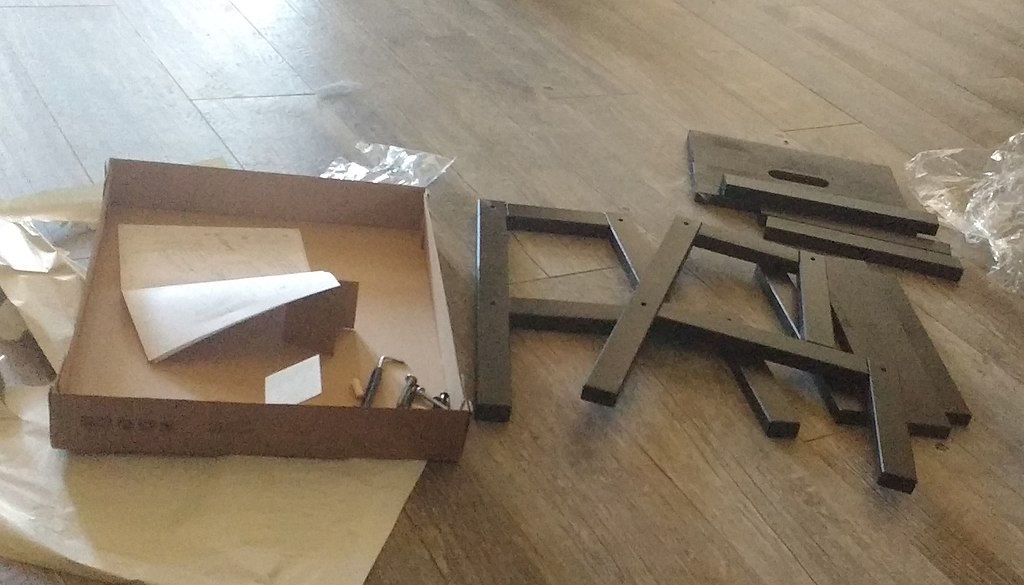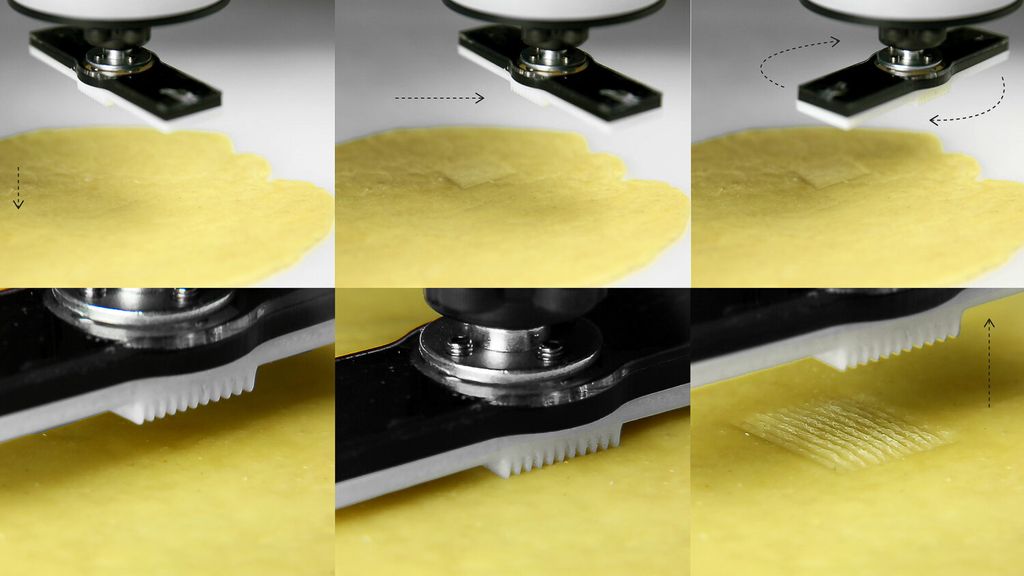A team of scientists have developed an unusual way of making flat pasta that allows it to turn into fancy 3D shapes as it cooks. The team hopes that the new pasta will be easier on the environment.
If you’re a pasta lover, then you know that the noodles come in all sorts of different shapes. There are flat noodles, round noodles, shells, curvy “elbows”, tubes with stripes, fancy spirals, and many, many more.

(Source: Morphing Matter Lab, Carnegie Mellon University.)
Some of these pastas, like ordinary spaghetti, pack easily into a small box or package. But others require much larger boxes or bags because their hard 3D shapes wrap around a whole lot of air.
Now a team of scientists at Carnegie Mellon University (CMU) has figured out a way that pasta can be packed flat, like sticks of gum in a package, and still form fancy 3D shapes once it’s cooked.

(Source: Morphing Matter Lab, Carnegie Mellon University.)
Lining Yao, who leads the “Morphing Matter Lab” at CMU says the team was inspired by “flat-pack furniture”. Flat-pack furniture, such as that sold by Ikea, comes tightly packed in a box, but then can be built into a large piece of furniture that takes up a much greater amount of space.
Flat-pack furniture is easy to store because it takes up so little space. Sending flat-pack furniture is also much easier on the environment because there’s very little wasted space in the delivery vehicles.

(Source: Bruce Szalwinski [CC BY 2.0], via Wikimedia Commons.)
To bring the flat-pack idea to the pasta world, the scientists used a fairly simple trick – stamping grooves in the pasta. The area of the pasta with grooves takes longer to cook. “The groove side expands less than the smooth side, leading the pasta to morph [change] into shape,” explains Teng Zhang, one of the researchers.
But knowing what kinds of grooves to make and where to make them is the trick. By figuring out just the right spots for grooves, the researchers were able to control the final shape of the pasta.

(Source: Morphing Matter Lab, Carnegie Mellon University.)
The scientists used computers to help them plan their groove patterns. The team came up with lots of different shapes of pasta, many of them similar to pasta styles that already exist.
Professor Yao has been working on similar projects for years. In the past, she has created other flat-pack materials, including flat pieces of plastic that take on complicated shapes when they are heated.

(Source: Morphing Matter Lab, Carnegie Mellon University.)
She has also worked to make noodles fold before, by adding a thin layer of a gel that could be eaten. This time, though, the pasta is made with just semolina flour and water, and the only things affecting the shape are the grooves. The pasta looks, feels, and tastes just like ordinary pasta once it is cooked.
The team hopes their new method will help the environment in two ways. Like flat-pack furniture, it should take up less space when it’s being transported. The pasta should also require much less packaging, meaning far less plastic waste.
Did You Know…?
Seventeen scientists took part in the research. Some were from CMU and others were from Syracuse University and Zhejiang University.
(Front page image: Morphing Matter Lab, Carnegie Mellon University.)
